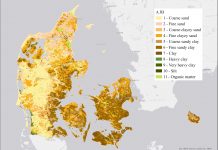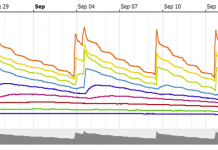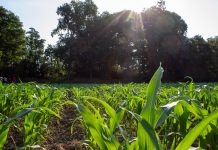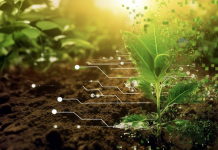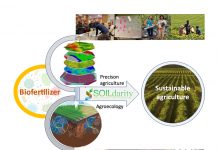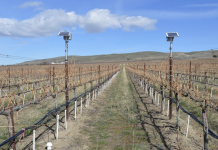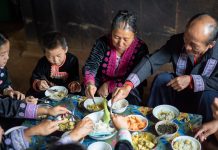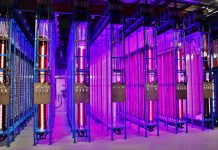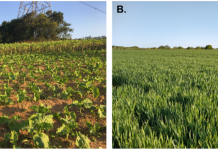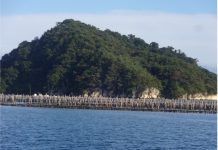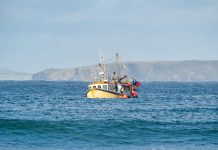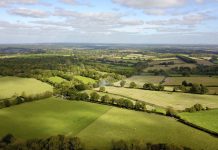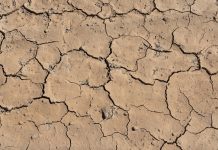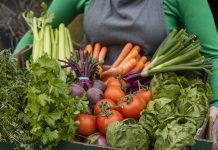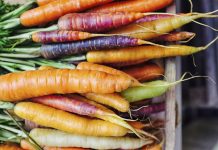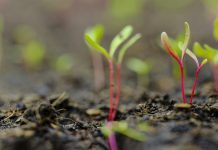Home 2024
Archives
Revolutionizing agriculture: Unleashing the potential of AI and big data in soil health monitoring
In a recent interview, our editors delved into the world of soil health monitoring and the transformative role played by artificial intelligence (AI), big data, and machine learning, with Mogens H. Greve, Professor and Head of the Soil Section at the Institute of Agroecology, Aarhus University.
Improving vineyard irrigation efficiency with soil water sensors
Using soil water sensors to automatically schedule irrigation in winegrape vineyards offers the potential for growers to enhance water use productivity under warmer climate conditions.
Cuba’s first motus tower for tracking migrant land birds
Keith Hobson, Professor and Research Scientist at Environment and Climate Change Canada and Western University, discusses updates in the expansion of tracking migratory birds in Central and South America, and the Caribbean.
Lithos crop protect: Food safety needs natural plant protection
Here, we learn that Lithos Crop Protect works on greener agriculture thanks to EU innovation funding.
Harnessing crop breeding innovations for a sustainable agricultural future
Dr. Sebastian Schultheiss, Co-Founder and Managing Director at Computomics, walks us through harnessing crop breeding innovations for a sustainable agricultural future.
Integrating biofertilizers and precision agriculture
This article presents a comprehensive analysis of the integration of biofertilisers and precision agriculture, with the aim of creating a virtuous circle of agricultural growth and sustainability, by Cristina Cruz and Teresa Dias of the Faculdade de Ciências da Universidade de Lisboa.
Sustainably developing great-tasting pet foods
Samantha Combe and Melissa Vanchina from Hill’s Pet Nutrition discuss the environmental impact of pet food, with a specific focus on sustainable alternatives to food palatants.
Enhancing irrigation effectiveness in vineyards with innovative technologies
Professor Pete W. Jacoby, from Washington State University, walks us through enhancing irrigation effectiveness in vineyards with innovative technologies like automated irrigation.
Antimicrobial food packaging: Challenges and achievements
Dr Kay Cooksey, Professor and Cryovac Chair at Clemson University, shares the potential of antimicrobial food packaging in mitigating microbial growth and the obstacles that have hindered the development of commercially available products thus far.
Combatting NCDs using Plant-based Proteins and Animal-Waste Products
Professor Apichart Vanavichit, PhD, a Rice Genomic Breeding Expert at the Rice Science Center, walks us through high-quality crop-based and ovo-based protein hydrolysates to combat non-communicable diseases in Thailand, specifically among its ageing population.
Microalgae as a sustainable source of protein and food ingredients
Microalgae can be an alternative sustainable source of protein and functional food ingredients that have the potential to improve gut and liver health.
Urban living laboratories: Opportunities for modelling sustainability transitions
Here, a group of academics present Urban Living Laboratories to study sustainable food production systems, using systems dynamic modelling to analyse policy alternatives.
Bamboo circulation in Satoyama and Satoumi: Japan’s hilly and coastal areas
Professor Saijo Kiyoshi at the Miyagi University of Education explains the work behind the bamboo circulation project of 2020, focusing on bamboo growth and utilization in Satoyama and Satoumi.
The Fish-X project: Supporting EU small-scale fisheries going digital
The implementation of innovative data management and data collection tools will help support the sustainable development of EU fisheries; learn how the Fish-X project will support this digital transition of small-scale fisheries.
Optimising subsurface drip irrigation for effective drought defence
Professor Pete W. Jacoby from Washington State University describes how the innovative use of drip irrigation can enhance vineyard resilience to drought.
Supporting Europe’s transition to climate-neutral farming
We hear from ClieNFarms, an Innovation Action project funded by the European Commission to support the European Green Deal and achieve climate-neutral farming across Europe’s agricultural industry by 2050.
The effect of soil degradation on human, animal and plant health
Dr. Christine Sprunger, soil scientist and ecologist at W.K. Kellogg Biological Station (KBS) and the Department of Plant, Soil, and Microbial Sciences at Michigan State University, discusses the danger of soil degradation on human and animal life, and what we can do to mitigate it.
Renewfood manufacturing: Food production for a nourished, resilient nation
Dr Kang Lan Tee, Matthew Hutchinson, Joe Price and Professor Tuck Seng Wong from the University of Sheffield explain the importance of re-imagining food production to support people and the planet.
Genetic mechanisms of pigment accumulation in carrot colours
We hear from Philipp Simon, from the USDA, Agricultural Research Service & University of Wisconsin, Madison, about how a kaleidoscope of colors reveals new genetic mechanisms of pigment accumulation in carrot colors.
Organic soil amendments: Enhancing vegetable production & soil health in Puerto Rico
Ermita Hernandez Heredia, Associate Professor from the University of Puerto Rico, details enhancing vegetable production and soil health in Puerto Rico in this organic soil amendments particular focus.


